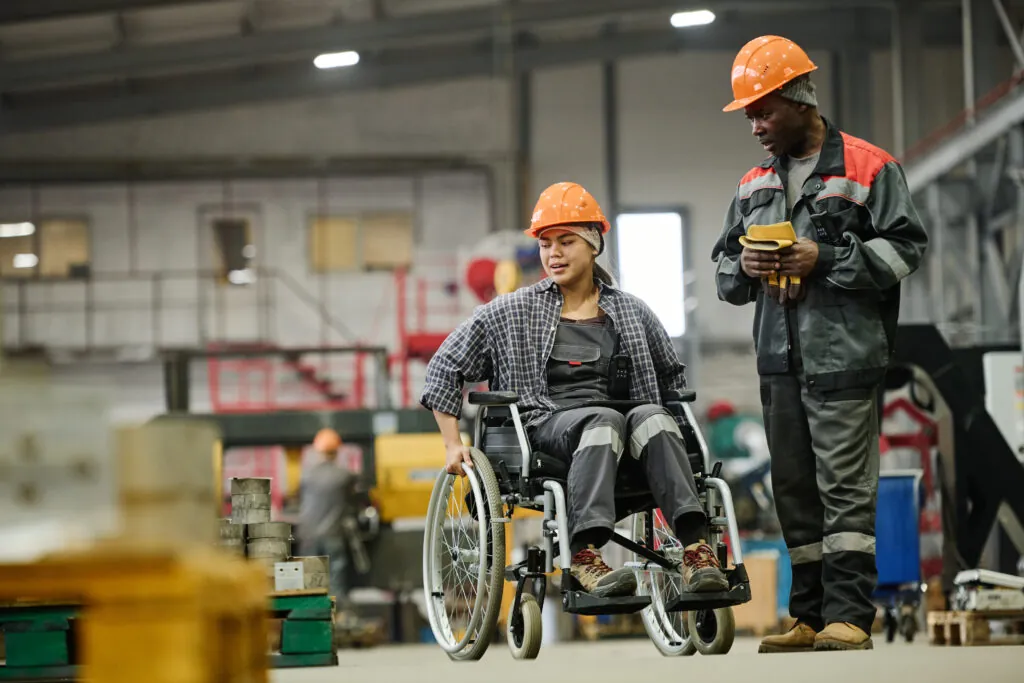By Sean Pilola, MAT, LAT, ATC, CES
Ergonomic Specialist, Fit For Work
Ergonomics is the scientific discipline aimed at understanding the interactions between humans and the other elements of a system to achieve greater employee well-being and systems-level performance. While it is its own advanced field, ergonomics also draws from a number of other disciplines in order to form its principles, including engineering, psychology, anthropometry, kinesiology, industrial design, and more.
Given these many different areas working together to put ergonomics into practice, it can generally be divided into three sub-areas: cognitive, physical, and organizational. Here’s a breakdown of what each of these three areas means to the discipline of ergonomics and how you can use them to optimize your working environment.
Cognitive Ergonomics
From a cognitive standpoint, ergonomics is primarily concerned with the mental processes required to perform in a role, such as reasoning, motor response, and perception. Cognitive ergonomics works to effectively design tasks to ensure the cognitive and psychological aspects of the processes are considered to avoid overstressing the human operator or employee.
A worker’s cognitive ability can affect many different aspects of their performance, ranging from mental workload capacity and reliability to stress management and human-computer interaction. In these respects, improving ergonomics means providing practical solutions that can be applied to improve cognitive processing, understanding, and performance.
Physical Ergonomics
Physical ergonomics involves the direct effect of work on the body, as well as the body’s responses to the physical and physiological demands of a given role. Musculoskeletal disorders (MSDs) occur within the area of physical ergonomics. In looking at the physical components of a position, a Certified Professional Ergonomist (CPE) or Ergonomic Specialist considers:
- Physical postures (neutral, awkward, and/or sustained)
- Material handling (lifting, pushing/pulling, carrying)
- The role of tools in the position (do they add or reduce stress on the body)
- Frequent and/or continuous movements/motions
- The layout of the workplace (are shelves reachable, are work surfaces adjustable, etc.)
- Environmental considerations such as heat, cold, wetness, etc.
Understanding the physical demands of a role or a set of tasks is critical to implementing deliverable solutions that will improve ergonomics.
Organizational Ergonomics
Where cognitive deals with the mind and physical deals with the body, organizational ergonomics is concerned with having official policies and processes in place that will reduce the risk of bodily stress and injury. Aspects of a role or workplace that impact ergonomics include:
- Best practices
- Job rotation
- Scheduling
- Resource management
- Breaks/stretching policies
It’s important to ensure workers are not only physically and mentally set up for success, but that the organization and leadership are providing them with the resources to do so.
The Multidisciplinary Advantage in Ergonomic Strategy
Effective and lasting ergonomics solutions require more than just a checklist approach—they demand a deep understanding of how work is designed and performed, and a systems-level mindset that accounts for the cognitive, physical, and organizational demands placed on employees.
A multidisciplinary approach brings together expertise from diverse fields such as engineering, psychology, occupational health, safety, and operations. Rather than focusing solely on individual discomfort or isolated tasks, this approach considers the full picture—from the design of tools and workflows to the organizational culture influencing behavior. The result: ergonomic strategies that not only reduce the risk of MSDs but also enhance productivity, quality, and employee well-being.
Organizations that embrace this kind of collaboration gain a strategic advantage. By integrating ergonomic expertise early in project planning and system design, businesses can optimize performance, minimize risk, and support a healthier, more engaged workforce.
Fit For Work helps organizations significantly reduce injuries and associated costs by applying cutting-edge ergonomic design techniques. Our multifaceted strategic safety solutions keep people from all walks of life and industries safe on the floor, in the field, and everywhere else. Click here to learn more.
Read how ergonomics transformed a school district here.

Sean Pilola is a seasoned healthcare professional based in Houston, Texas. He earned his bachelor’s degree in exercise and sports science from Texas State University in 2013, followed by a master’s in athletic training from the University of Houston in 2018.
Before joining Fit For Work, he served as a Corrective Exercise Specialist at several facilities across the Greater Houston area. At Fit For Work, Sean wears multiple hats—Ergonomic Specialist, Injury Prevention Specialist, and Testing Specialist—bringing deep expertise and a strong commitment to helping others stay healthy and safe on the job.
Sean enjoys coaching CrossFit, spending time outdoors, playing with his dog, and being with family and friends.





